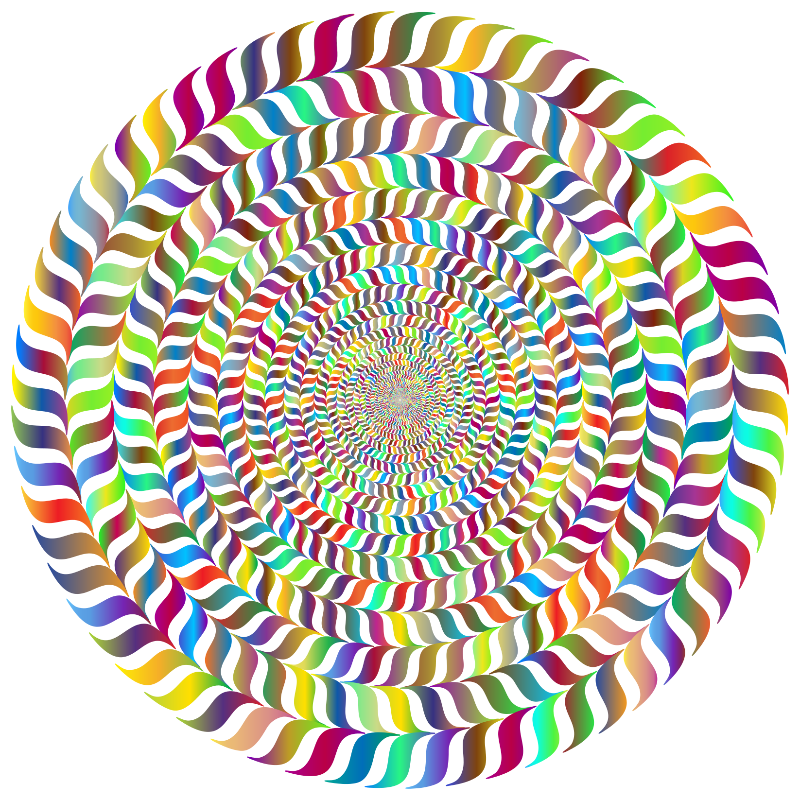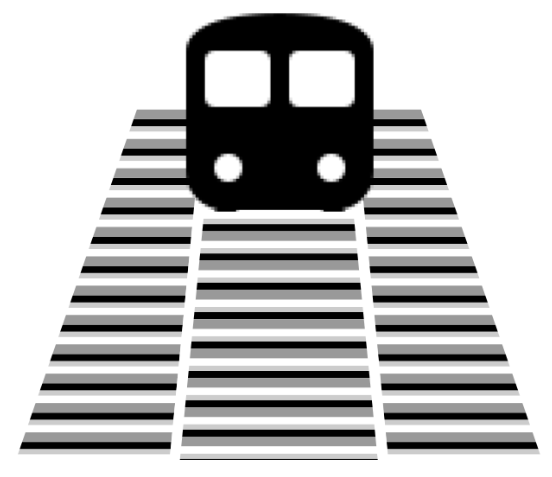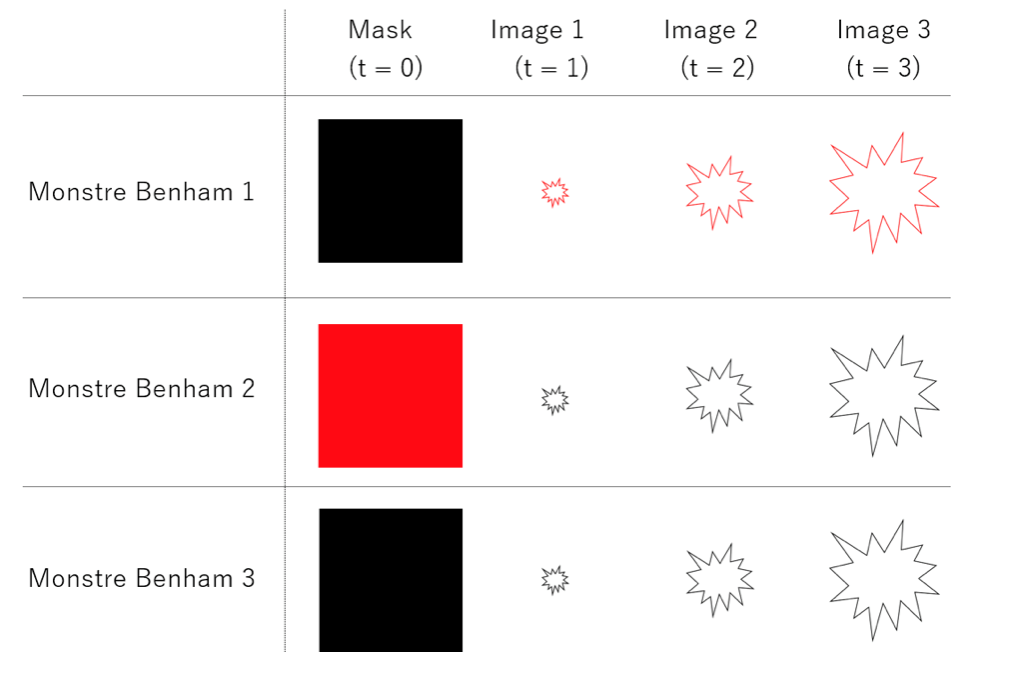【入賞】第11回 錯視・錯聴コンテスト 2019
「第11回 錯視・錯聴コンテスト2019」に研究員のラナ・シナパヤが出展した作品「ベンハムモンスター錯視(Monstre Benham Illusion)」が入賞しました。

研究員のラナ・シナパヤが日本基礎心理学会が主催する「第11回 錯視・錯聴コンテスト2019」へ出展している作品のご紹介を致します。画像をクリックするとアニメーション効果をご覧いただけます。
各作品には動きの速い光や点滅を繰り返すアニメーションが再生されます。感受性発作(光源性てんかん)等ある方はご視聴をお控え下さい。
また、ご視聴の際は明るい部屋で、画面から適度な距離をとって下さい。目など身体に不快感を生じたときは、すぐにご視聴を中止してください。
Illusion 1: 回る中骨の錯視
作品紹介

Illusion 4: ベンハムモンスター錯視(Monstre Benham Illusion)
白と黒だけで描かれた円盤が回転したときに色の知覚が生じることがあります。これは主観色と呼ばれ、ドイツの物理学者であるグスタフ・フェヒナーによって発見されました。ベンハムの独楽はその代表例です。今回私たちは独楽の回転運動を、パラパラ漫画を実現するための装置と解釈し、一連の作品を作り上げました。提出した3つのすべてのバリエーションでは、Mask・Image 1・Image 2・Image 3の順にループ提示されます。Maskは黒か赤、Imageも黒か赤です(下図参照)。3つのImageは同じ色で提示されますが、それぞれ異なる色として認識されます。例えば、Monstre Benham 1では、赤色のImageが、オレンジ色、ピンク色、赤色という風に異なる色に見えます。MaskとImageを黒に統一したMonstre Benham 3が、オリジナルのベンハムの独楽に最も近い構成です。Maskの色、Imageの色や形を工夫することで、楽しい錯視をどんどん作れると思います。gifアニメーションですので、ChromeなどのWebブラウザーで鑑賞することができます。


